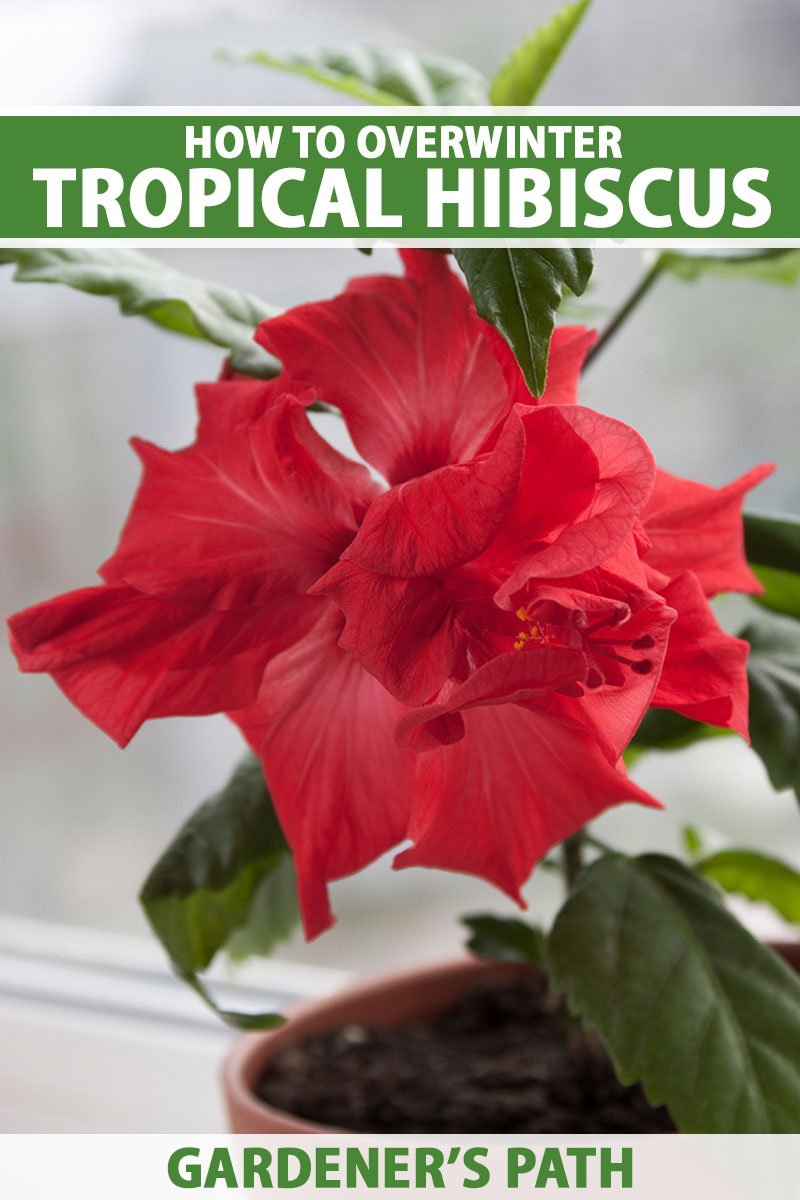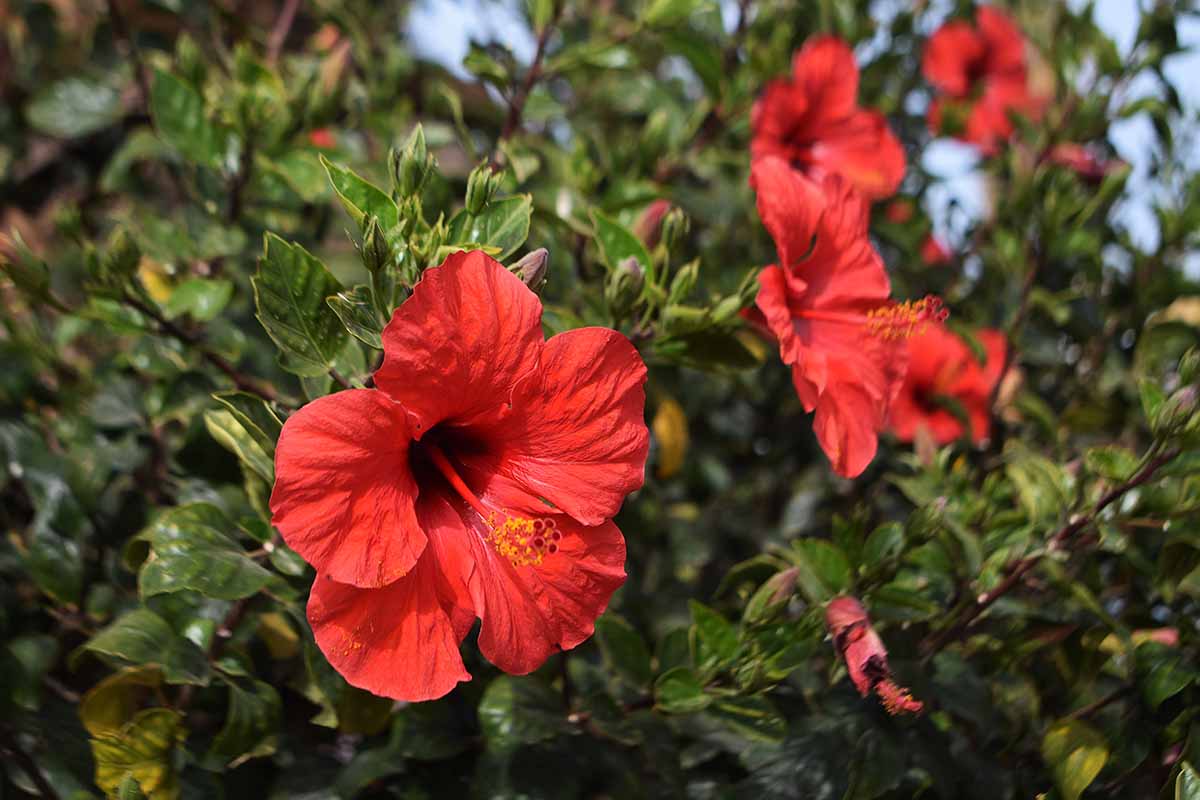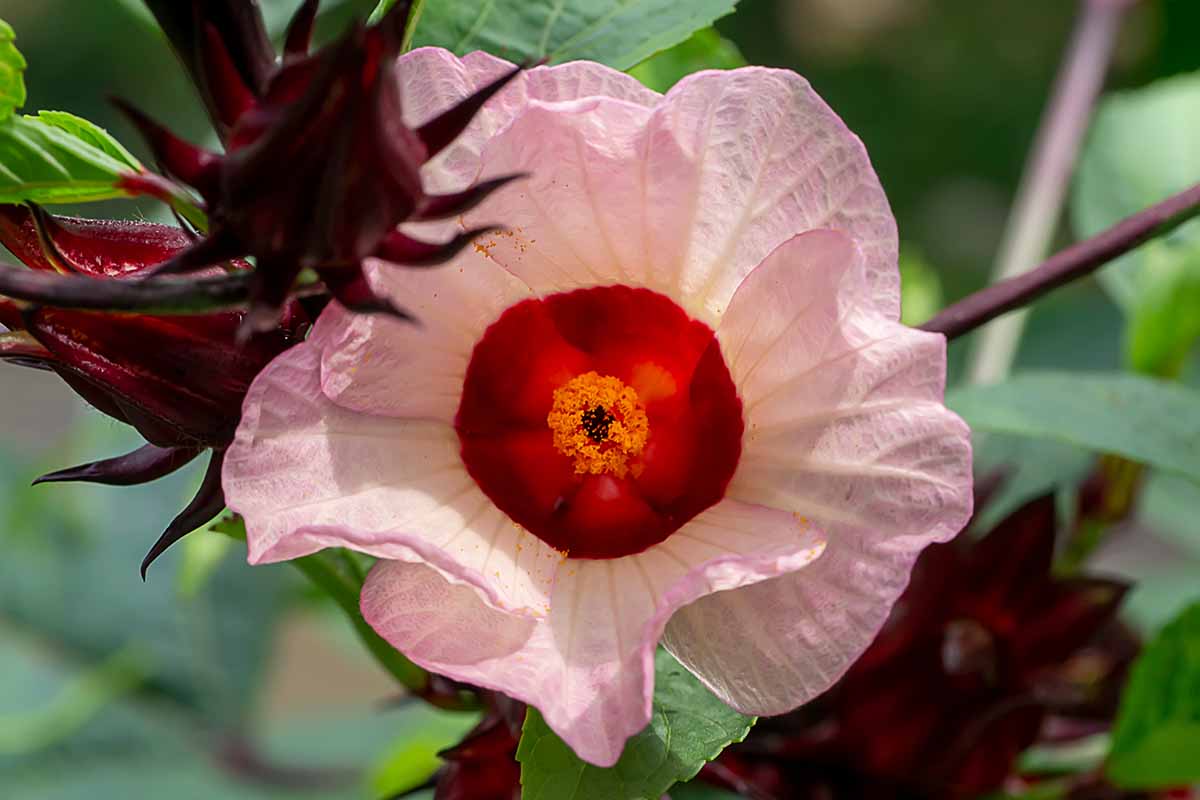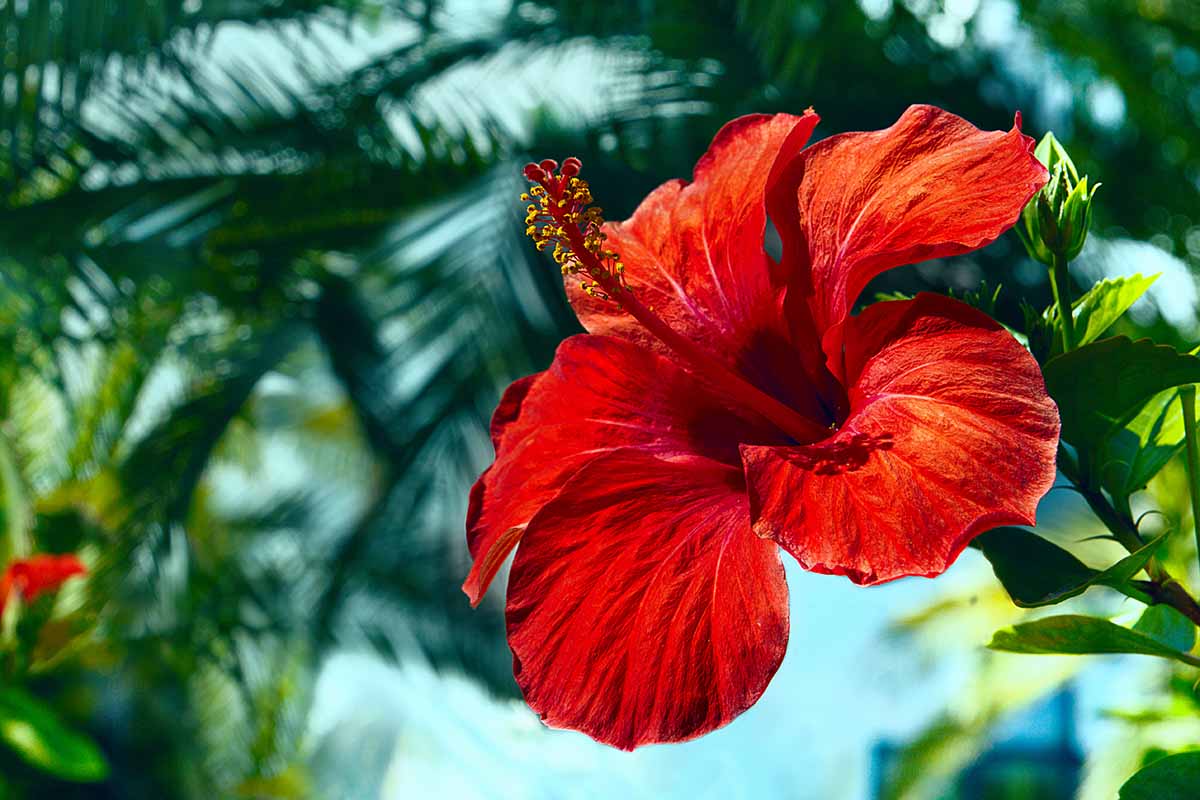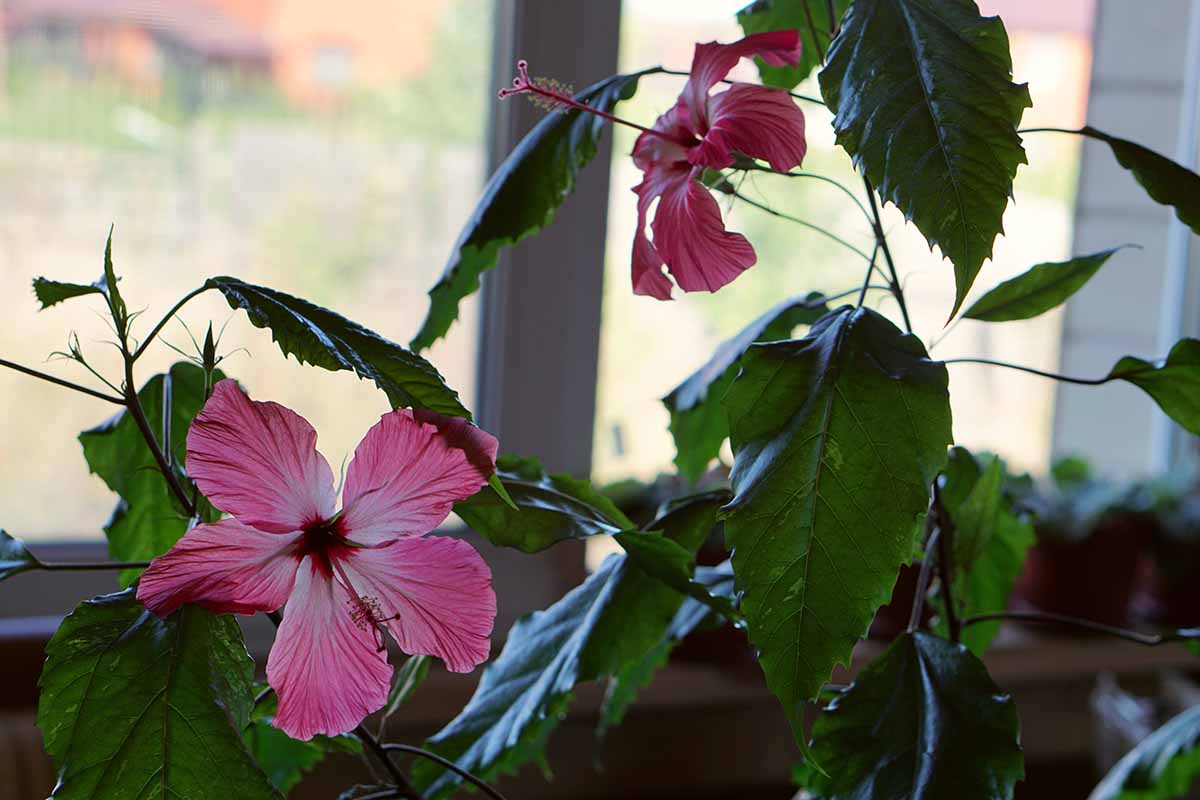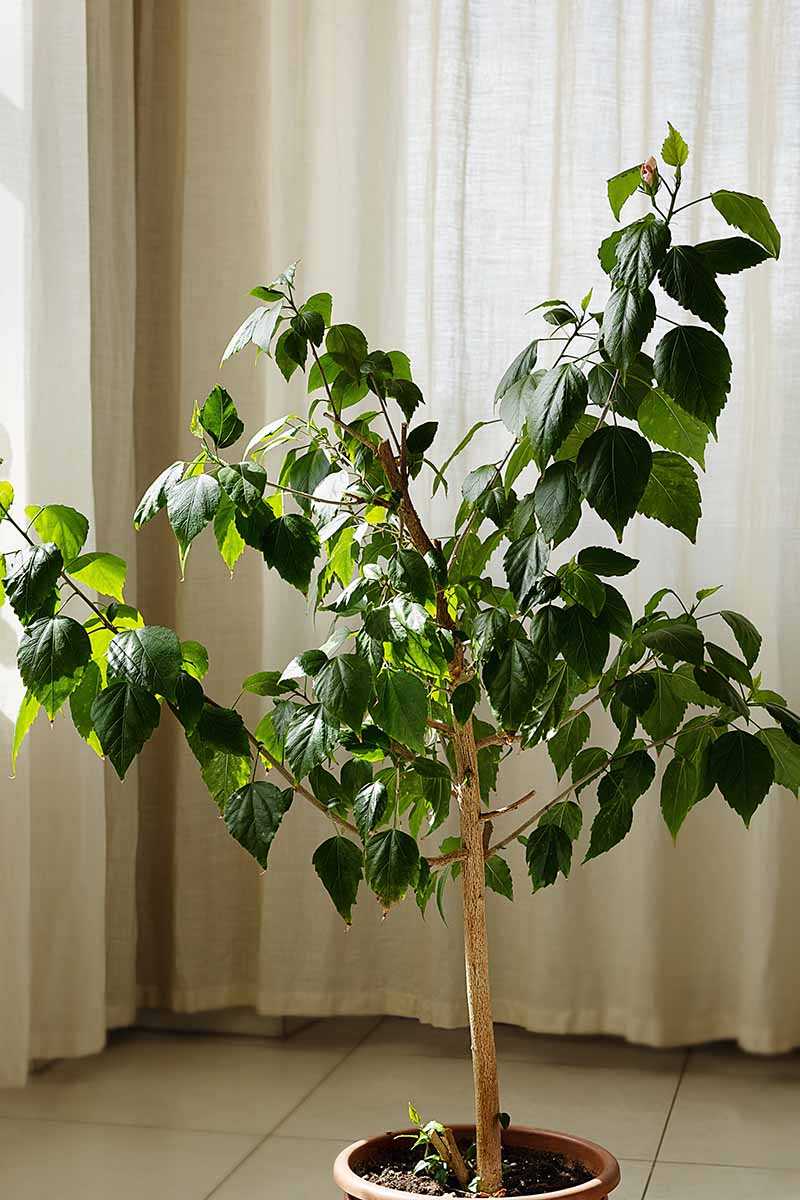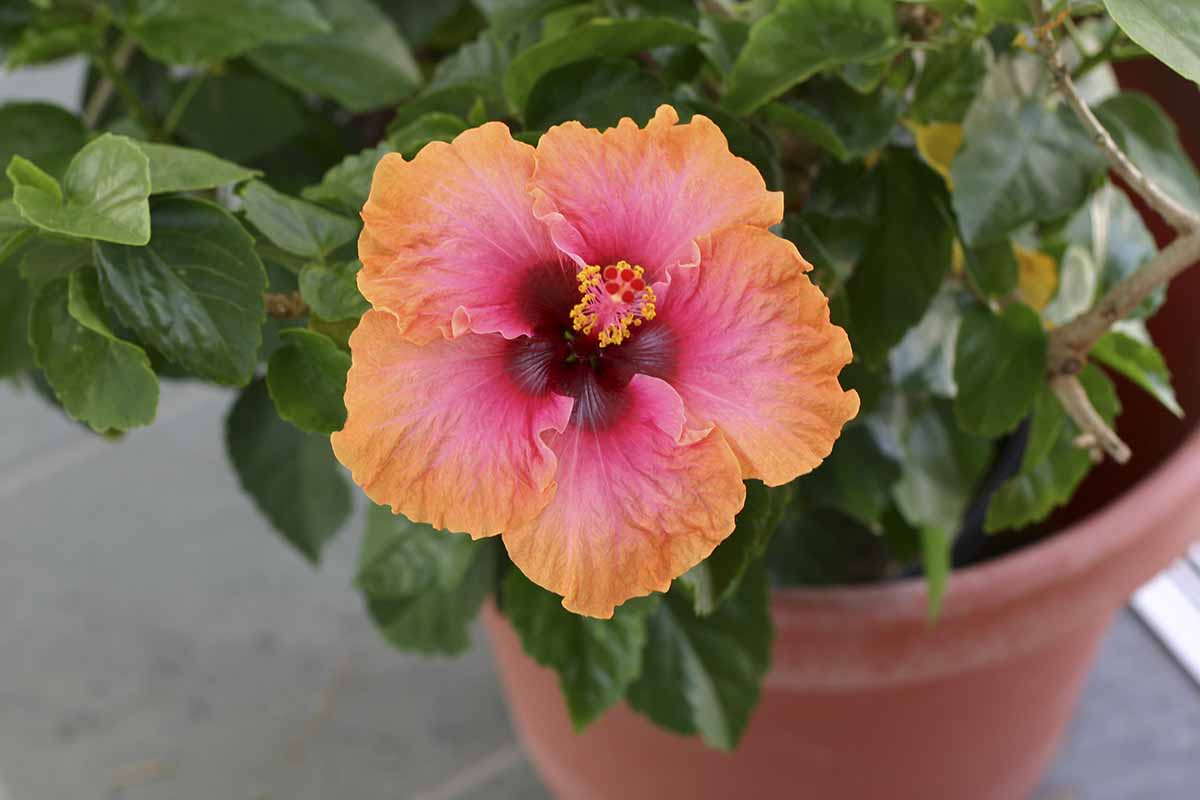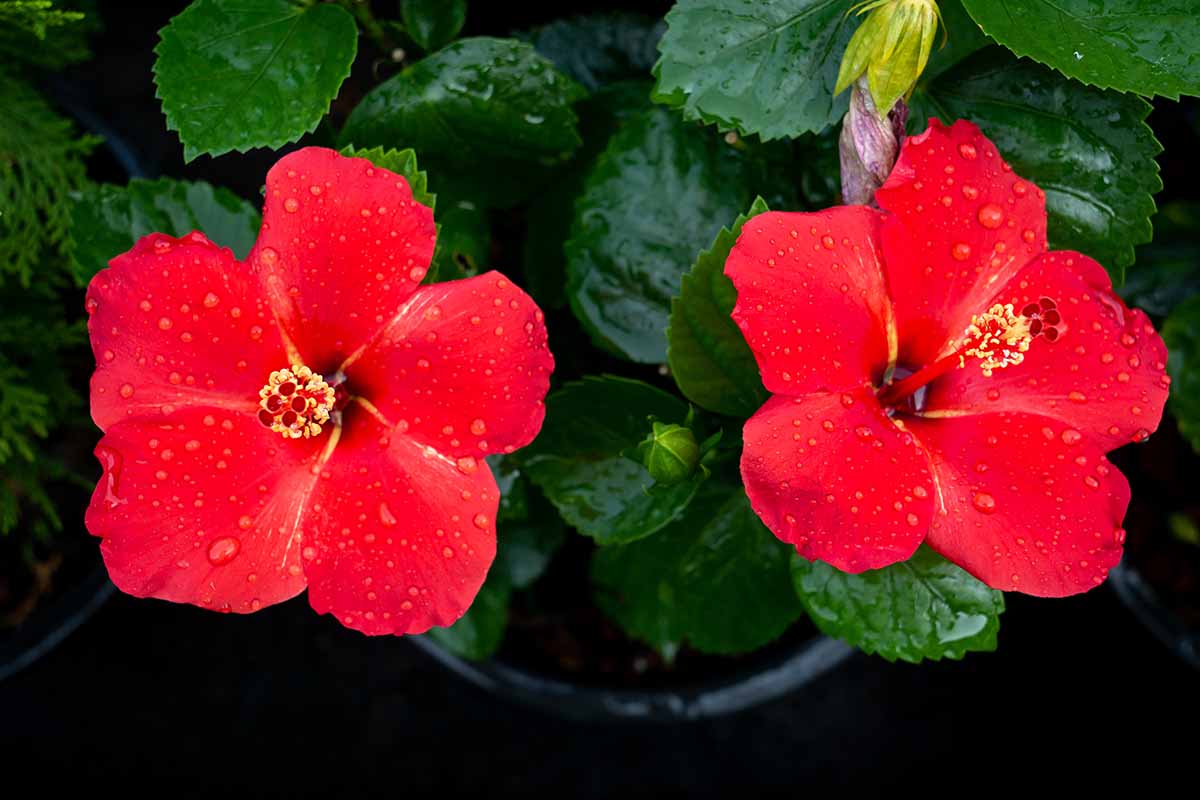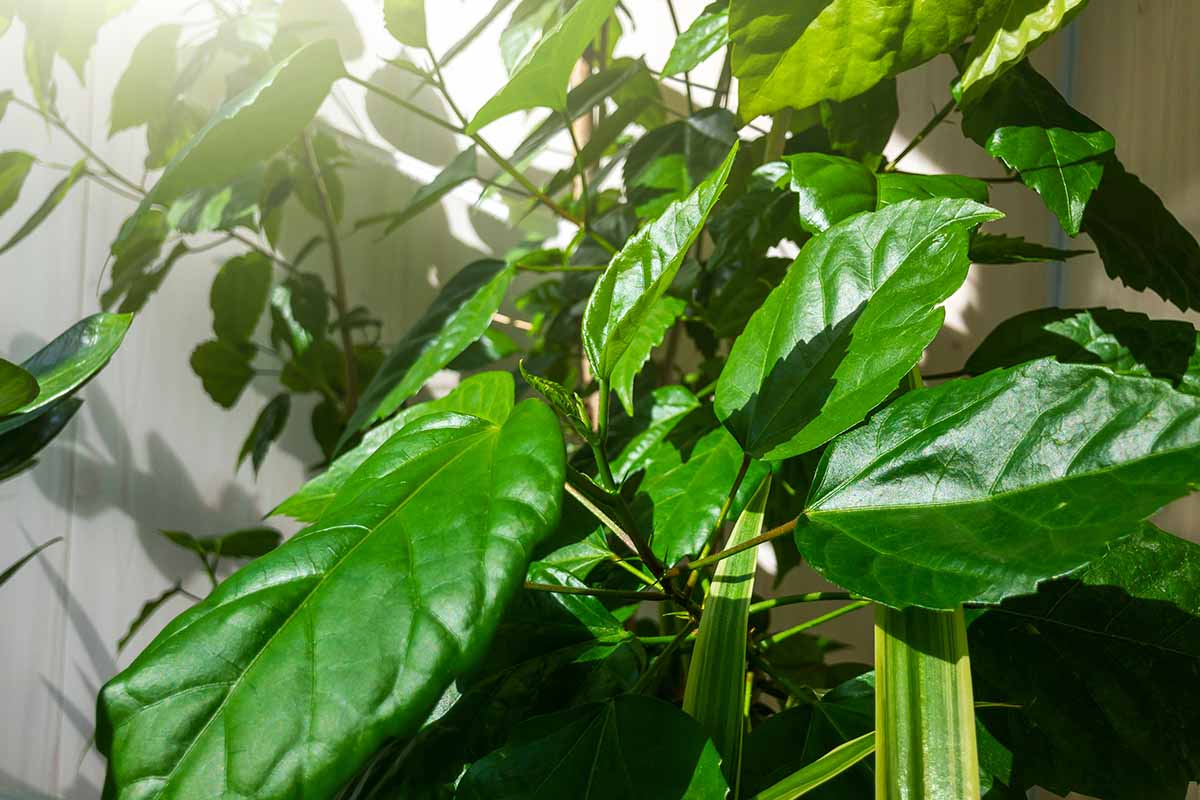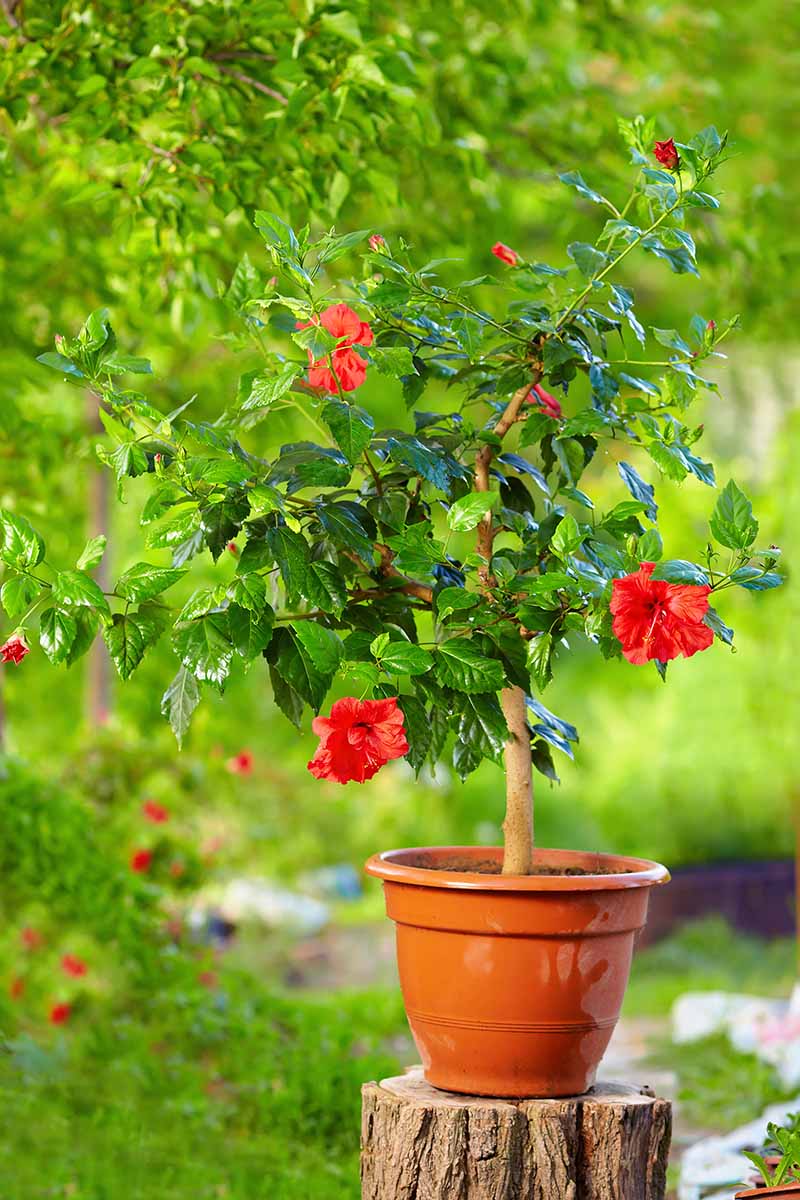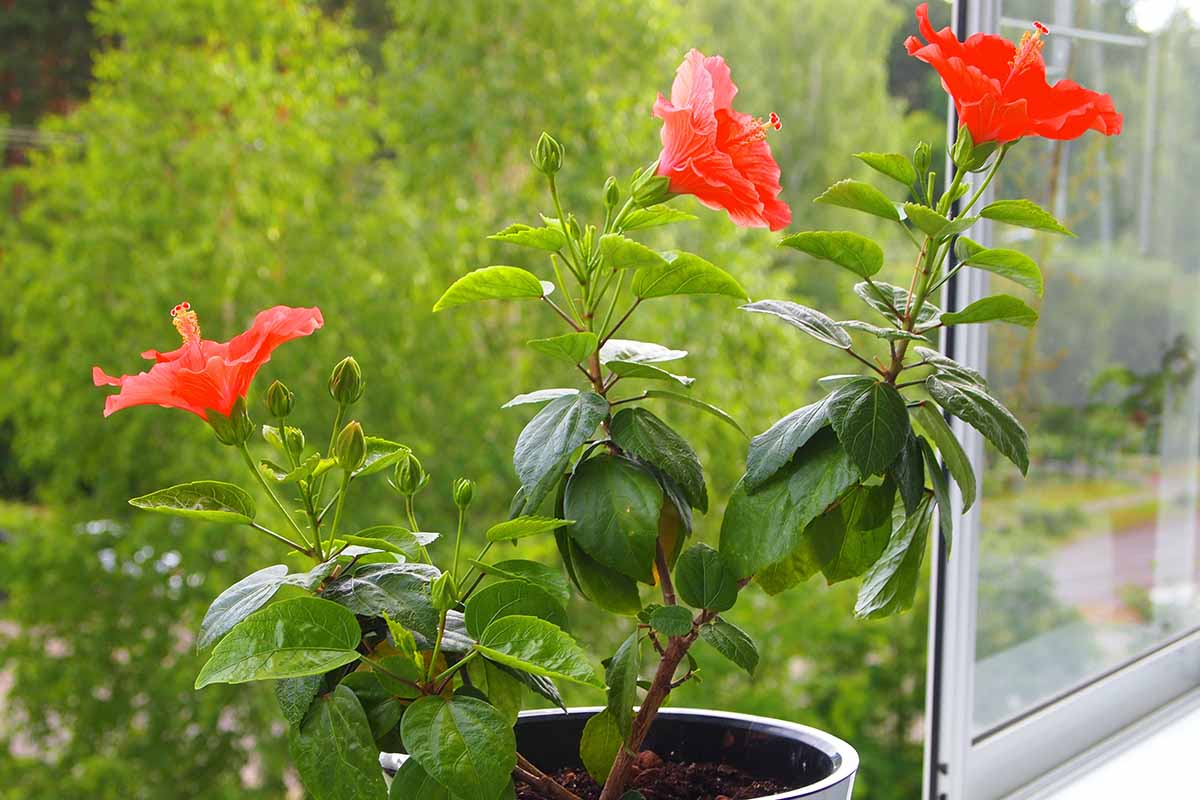We link to vendors to help you find relevant products. If you buy from one of our links, we may earn a commission. Now I can grow and dry my own flowers for tea and at the same time be treated to beautiful blooms all winter long. Continue reading to learn how to overwinter hibiscus indoors so you can grow these amazing plants year-round, even in northern climates. While there are upwards of 200 species in the Hibiscus genus with hundreds of cultivars, including both hardy and tropical varieties, this article focuses on tropical species like H. rosa-sinensis, commonly known as Chinese or Hawaiian hibiscus. Most of the tropical specimens found in home gardens are cultivars and hybrids of this species. Perennial in tropical and subtropical climates, the species plant is widely cultivated as an ornamental, famous for its bold, deep red flowers, which also happen to be edible. They can be used fresh in salads, or when dried, they make an absolutely delicious and colorful tea. H. sabdariffa, or roselle, is another tropical species native to Africa that is commonly grown for use in food and medicine. You can learn more about different varieties of hibiscus in our roundup. No matter which species or cultivar you choose to grow, this guide contains all the info you need to care for these showy plants over winter.
When to Move Your Hibiscus Indoors
These tropical shrubs are found growing naturally in hot, sunny, humid climates, thriving in temperatures ranging from 60 to 90°F. While they grow and bloom year-round in the tropics, in colder zones, plants will die off when temperatures dip to 30°F for even a couple of hours. To keep plants alive and flourishing in Zones 9 and below, they must be brought indoors when nighttime temperatures begin to fall to 60°F – or in other words, well before the first frost hits. In very cold growing zones like my Zone 4 home in Vermont, this means they will be spending much more of the year inside than out. If you live in a colder climate, I advise growing your shrub in a container year-round rather than planting it directly in the ground outside and trying to dig it up to move it indoors. Not only will this help to avoid unnecessary transplant shock every time you move your plant back and forth, it will also simplify the process significantly. When planting, make sure you choose a well-draining pot that is large enough for the roots to spread. To learn more about planting and growing tropical hibiscus, check out our comprehensive guide. Selecting pots on wheels or choosing a wheeled cart to place them on can make moving easier. Keep an eye on the weather as nighttime temperatures begin to cool. When they start approaching the 60°F mark, it’s time to begin the moving process.
How to Move It Indoors
Before bringing the pot indoors, check the leaves and flowers for pests. Wash off the foliage with a strong stream of water from the hose or fill a spray bottle with water mixed with a few drops of dish soap and spritz the leaves anywhere you see signs of insects. Allow the plant to dry before moving it indoors. Set the container in a warm spot in your house, ideally near a window that receives a minimum of six hours a day of direct sunlight, preferably more. If this isn’t possible, you can use artificial grow lights set to turn on for up to 16 hours a day for ideal growth and vigor. Plants will likely survive the winter with less light, but if you want flowers through the winter then more is necessary. The more direct light plants receive, the more likely they will be to bloom. Those that don’t receive enough light may also become leggy and weak. Keep in mind that plants may experience some initial shock during the adjustment period. It is not uncommon for some leaves and buds to turn yellow and fall at first, but plants should bounce back in a week or two.
Care and Maintenance
These tropical evergreens are native to humid environments. Water often enough to keep the soil evenly moist, never allowing it to dry out completely. If your house is on the dry side, which is not uncommon when heat is running in the winter, you can also mist the foliage occasionally with a spray bottle filled with lukewarm water. At the same time, keep in mind that overwatering can cause rotting and yellowing of leaves. Do not let the soil become soggy. Fertilizing over the winter isn’t necessary, though it can help encourage indoor blooming. If you choose to do so, only feed once using an organic fertilizer. Do this just in early winter, after the plant has had time to adjust to its indoor location. In early spring, you can increase this to once every couple of months. A balanced all-purpose liquid fertilizer diluted to half strength should work fine, or you can look for one that’s formulated for use on hibiscus to promote blooming and healthy growth. Using a water-soluble feed made specifically for hibiscus plants will also help to encourage blooming during winter indoors. In late winter or early spring, prune back and leggy stems and dead wood. You can also cut back healthy stems to about half their length at this time, to maintain a bushy size and shape. If space is limited inside your home, you may prune back branches at any point by up to half their size without causing harm.
Moving Plants Back Outdoors
Your plant can be returned to its outdoor home as soon as temperatures remain consistently above 60°F. To reduce the risk of shock, place the container in a shady and protected location at first, moving it gradually over the course of a week or two until finally setting it in its final spot in full sun.
Overwintering with Forced Dormancy
If you don’t have the time or want to worry about caring for a houseplant over the winter, or the available space indoors, another method is available to you – forcing plants into dormancy. This will allow you to store your hibiscus somewhere out of the way without much care or worry required until spring. If using this method, simply stop watering in late summer and leave the container outdoors until nighttime temperatures dip to 50°F. You may notice flowers and leaves start to drop. At this point, relocate the pot to a dark, cool location in your house or basement that stays somewhere between 50°F and 60°F. Check in every few weeks, watering very sparingly, and only if the soil is completely dry to the bottom of the pot. To wake your hibiscus back up in the spring, you will want to slowly start adjusting the conditions a month or two before the average last frost date. In early spring, move the container to a brighter room that receives indirect sunlight. An unheated greenhouse, shed, or garage will suffice as long as temperatures do not dip below 50°F. Water enough to begin to moisten the soil, increasing the amount of water provided gradually over a few weeks until you are eventually keeping the soil evenly moist. As soon as you notice new leaf buds, feed your plant with a small, quarter-strength dose of compost tea or organic liquid fertilizer. Return your hibiscus outside only after temperatures are consistently above 60°F.
Color Your Winter
Just because you live somewhere with cold winters doesn’t mean you have to limit yourself to cold-hardy plants! With barely any effort, you can easily overwinter tropical hibiscus to enjoy all that these stunning shrubs have to offer. Have you had success growing tropical hibiscus over winter? Share your tips and photos in the comments below. And check out these articles next to learn more about growing hibiscus plants:
How to Grow and Care for Rose of SharonHow to Identify and Control Caterpillars on Tropical HibiscusHow to Grow and Care for Hardy Hibiscus
